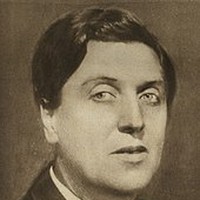Beethoven’s Eroica Symphony with Gábor Takács-Nagy
Sponsored By
- June 9

Sponsored By


Alban Berg was a self-taught composer until the age of 19, when he began studying in his native Vienna with Arnold Schoenberg. In the years to come, while Schoenberg stretched tonal harmony past its breaking point and ultimately found his way to the twelve-tone technique as a way to reimpose order on the chaos of atonality, Berg followed each step of the way. Along with Schoenberg’s other earliest student, Anton Webern, Berg formed the nucleus of what has been dubbed “The Second Viennese School,” a title of honor that holds them up against the glory days of Franz Joseph Haydn, Wolfgang Amadeus Mozart and Ludwig van Beethoven in Vienna.
In what turned out to be the last year of his life, amid work on the orchestration of the opera Lulu that would never be completed, Berg reluctantly accepted a well-paying commission in 1935 to write a concerto for the Ukrainian-American violinist Louis Krasner. The project took on a new emotional resonance when Berg learned of the death of Manon Gropius, the daughter of the architect Walter Gropius and Alma Mahler (Gustav Mahler’s widow). As a tribute to the eighteen-year-old aspiring actress felled after a yearlong battle with polio, Berg dedicated the concerto “to the memory of an angel.”
Using Schoenberg’s formula, Berg organized the violin concerto around a twelve-tone row — a fixed series in which each of the twelve chromatic pitches appears once, in a set order. This concerto’s tone row is distinctive in that incorporates triads, the building blocks of tonal harmony. Segments of the row spell triads in G-minor, D-major, A-minor and E-major, such that the four root notes correspond to the tuning of a violin’s four strings. Those open strings are the first tones played by the soloist.
The last segment of the tone row breaks the triadic sequence and instead rises up a whole-tone scale. Those final four pitches match Bach’s harmonization of the chorale Es ist genug (It is Enough), a melody originally composed in 1662 by Rudolf Ahle and incorporated by Johann Sebastian Bach into the Cantata BWV 60. The chorale’s lyrics match the elegiac nature of Berg’s concerto: “It is enough: Lord, if it pleases You, Then release me! My Jesus comes; Good night now, o world! I journey to heaven’s house, I go there securely in peace, My great suffering remains behind. It is enough.”
The concerto is structured in two movements, each subdivided into two parts. The first movement begins as a portrait of Manon in a tender Andante tempo, and then it transitions to an agitated scherzo that includes a quotation of a Carinthian folk song from the Austrian Alps.
The second movement begins as a free-flowing Allegro, with cadenza-like violin statements accompanied by the orchestra. This section, with its harrowing aura of death, leads into the closing Adagio, which includes quotations of Bach’s chorale.
Aaron Grad ©2024

After writing a monumental symphony that dwarfed his two previous efforts (and those of all composers who came before him), Ludwig van Beethoven gave the Symphony No. 3 in E-flat Major the subtitle of "Bonaparte," honoring the military mastermind of Revolutionary France. But the composer’s adulation turned to disgust in 1804, when he learned that Napoleon had crowned himself Emperor; according to the student who delivered the disturbing news, Ferdinand Ries, “Beethoven went to the table, seized the top of the title-page, tore it in half and threw it on the floor.” When preparing the symphony for publication in 1806, Beethoven re-titled it "Sinfonia eroica, composed to celebrate the memory of a great man,” without specifying who that other hero was.
The defining motive of the Eroica Symphony’s first movement is a rocking cello strain that trails into foreign harmonies after four measures. As the central development section closes, a French horn makes a surprise entrance with a recapitulation of that same theme a few measures ahead of schedule — an effect so unexpected that even Beethoven’s student Ries, upon hearing the symphony for the first time, suspected the horn player of having lost count of the measures.
The symphony’s second movement, labeled a funeral march, sinks into a prolonged state of despair that might induce misery if not for its undeniable grace and beauty. A major-key interlude, providing respite, incorporates an arpeggiated accompaniment that recalls the gentle sway of the first movement. After returning to the minor key, the appearance of fugal counterpoint reinforces the profound, ceremonial atmosphere of the funeral march.
Out of this grief comes a giddy Scherzo, a symphonic construct that Beethoven popularized as an alternative to Franz Joseph Haydn’s slower, tamer minuets. A contrasting trio section features the three horns in vigorous hunting calls.
The finale, built as a theme and variations, incorporates material from the ballet The Creatures of Prometheus that Beethoven had also used in an earlier set of piano variations. A short but fiery introduction gives way to an unusual presentation of the theme, reduced to its bare skeleton.
Aaron Grad ©2024
Get driving directions and find nearby parking.
Find dining options close to the venue.
View seating charts to find out where you'll be seating.
SPCO concerts are made possible by audience contributions.
For exclusive discounts, behind-the-scenes info, and more:
Sign up for our email club!
